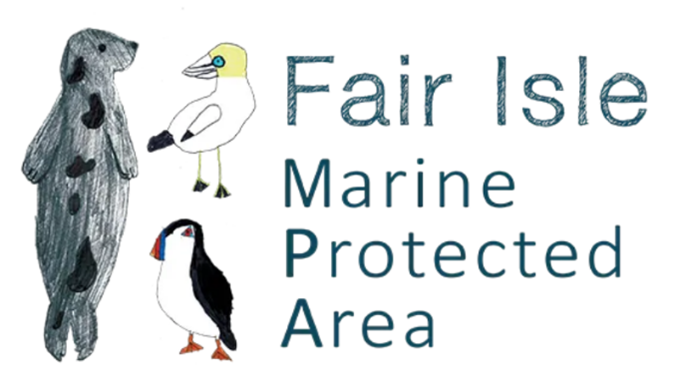UHI Shetland Report Highlights Role of Local Data in Fair Isle DR MPA Predictive Modelling
UHI Shetland, in partnership with the Fair Isle Demonstration and Research Marine Protected Area (DR MPA) Executive Steering Group, have released a report detailing the findings from a dedicated benthic survey conducted in September 2024 and subsequent updated predictive modelling. This project was supported by the players of People’s Postcode Lottery through the National Trust for Scotland’s Love our Nature project. The report highlights the role of predictive modelling in mapping potential marine habitat distribution, particularly where direct data is limited.
Underwater benthic habitats, known as ‘biotopes’, which are areas where specific communities of species and environmental conditions coexist. These ‘biotopes’ were identified as a research priority within the Fair Isle DR MPA research and project programme, following stakeholder consultation during Winter 2020/21, due to the limited knowledge that exists about them to date. In the absence of comprehensive ground-truthing, predictive modelling offers a way to estimate the potential location and extent of these habitats by analysing environmental factors such as depth, salinity, and seabed type. These modelled outputs can be used to guide future surveys, research effort and potential future management decisions within the Fair Isle DR MPA.
Predictive habitat modelling, first undertaken in 2023, was expanded upon in this new report using 2,836 habitat records, up from 2,596 in the original 2023 model. Records specific to the Fair Isle DR MPA increased from just 5 to 126 due to the September 2024 benthic survey and analysis of BRUV data from the Fair Isle inshore fish surveys (2022-2023). These additional data points aided in the refinement of previous model outputs.
The 2024 boat survey identified 10 distinct biotopes around Fair Isle, including two kelp bed biotopes classified as Priority Marine Features, which are habitats considered by the Scottish Government to be of conservation importance. This information fed directly into the updated model. While the updated model did not reveal any major changes in the types of habitats predicted, it did refine the boundaries of where those habitats are likely to occur. These adjustments reflect the input of local data, and not real-world habitat change, reaffirming the importance of ongoing field surveys to validate and update model predictions.
Tanya Riley, a marine scientist from UHI Shetland, said:
"Predictive models are powerful tools, particularly where direct data is limited. The updated model shows that by incorporating more local data, we’re not seeing new habitats appear or disappear, but rather refining the boundaries of where existing habitats are likely to be. This is a key for guiding future research and monitoring within the Fair Isle DR MPA.”
Katie Cubbon, Research Officer for the Fair Isle DR MPA, said:
“It is brilliant to see the outputs of this priority research into benthic habitats as part of the Fair Isle Demonstration and Research MPA project. Findings from these predictive models add to the baseline data series for the Fair Isle DR MPA, which cover all aspects of the marine environment, from benthic habitats to top predators. This information helps us to expand our knowledge of all aspects of the marine environment around Fair Isle and how they interact. This report also highlights the importance of long-term monitoring within the Fair Isle DR MPA.”
Although predictive models offer valuable insights, they cannot replace direct observations or physical validation. This study reinforces the importance of ongoing fieldwork, particularly in complex nearshore environments, to ensure model outputs are informed by the best data possible.

